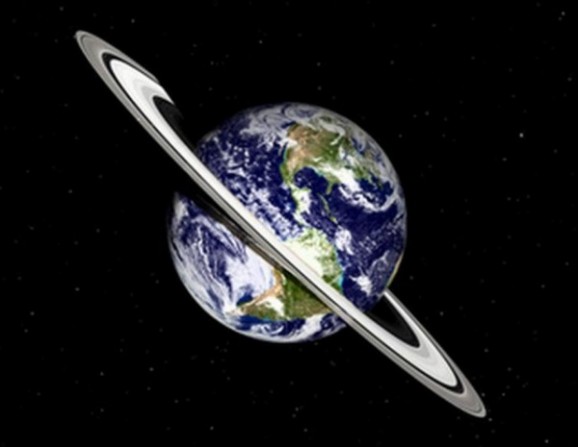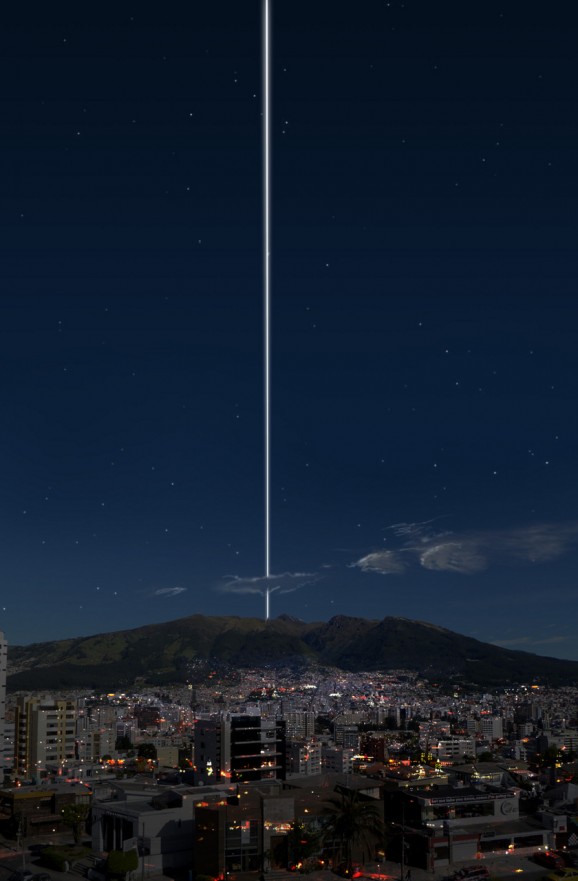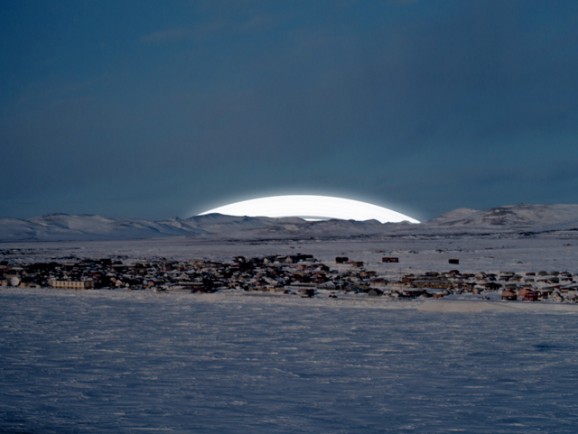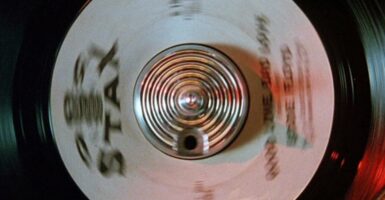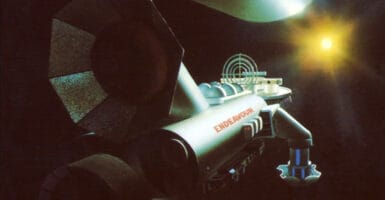Artist Ron Miller Shows Earth He Cares By Giving It A Ring
This article is more than 2 years old
Art and science are colliding all over the place lately. You’ve got an astronaut surveying a futurist earth, paintings of the bones of famous spacecraft, and now, illustrations of what Earth would look like with Saturn’s rings.
Artist Ron Miller, former art director of the National Air & Space Museum’s Albert Einstein Planetarium, is most known for his space art. He tries to make his ringed-Earth series as realistic as possible, choosing locations not just for their high recognition factor, but also for their distance from the equator, which he took into account as he rendered the rings. At the equator, for example, the rings would appear as a straight line bifurcating the horizon.
He also depicts scenes at different times of day in order to capture the change in the rings’ luminosity. Depending on their distance from the Moon, and the different times of year, these paintings capture the change in the Sun’s position.
Miller also specializes in science fiction art, and has worked as a production illustrator on David Lynch’s Dune, a conceptual artist for Total Recall, and a consultant on Robert Zemeckis’ Contact. His art has also graced the covers of a bunch of awesomely geeky magazines, like Discover, Scientific American, and many more.
In addition to creating works of visual art, Miller writes fiction and non-fiction books about space and science fiction, with a particular aim to engage young people in science. He even designed a series of postage stamps for each planet in the solar system, inspiring the New Horizons probe with his “Not Yet Explored” Pluto stamp, one of which was affixed to New Horizons before launch.
Miller has also depicted what the sky would look like if other planets were as close to Earth as the moon, as well as envisioned a post-apocalyptic Earth. I think the ringed-Earth series has them both beat, but maybe that’s just because I’ve always had a case of Saturn envy.
